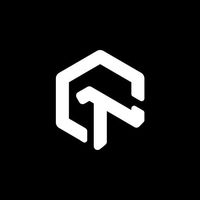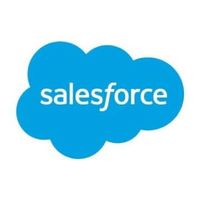Docker and Thesys: Pioneering the Future of AI Development
April 22, 2025, 11:36 pm

Location: India, Karnataka, Bengaluru
Employees: 201-500
Founded date: 2017
Total raised: $108.5M
In the ever-evolving landscape of technology, two companies are making waves: Docker and Thesys. Both are redefining how developers interact with artificial intelligence (AI) and user interfaces. Their recent innovations promise to streamline workflows, enhance productivity, and ultimately change the way we build software.
Docker has long been a stalwart in the realm of cloud-native application development. With its latest offerings, the Docker MCP Catalog and Docker MCP Toolkit, the company is extending its reach into the burgeoning Model Context Protocol (MCP) ecosystem. This move is not just a step forward; it’s a leap into the future of AI development.
Imagine a toolbox where every tool is verified, secure, and easy to use. That’s what Docker is building with its MCP Catalog. Integrated into Docker Hub, this catalog serves as a centralized hub for developers to discover and utilize over 100 MCP tools. It’s like a treasure chest, but instead of gold, it’s filled with powerful tools that simplify the integration of AI into existing workflows.
The Docker MCP Toolkit complements this catalog. It allows developers to run, authenticate, and manage MCP tools with the same ease they expect from Docker. The goal? To make building functional AI applications feel as familiar as creating any other app. Developers can now build locally, test, and deploy with confidence. The friction that once plagued AI integration is being smoothed out.
Docker is not going it alone. The company has partnered with industry giants like Elastic, Heroku, and New Relic. These collaborations are crucial. They create a robust ecosystem where developers can leverage trusted tools without the hassle of complex setups. With Docker’s enterprise-ready solutions, security and scalability are no longer afterthoughts; they are built into the foundation.
The demand for secure software delivery is skyrocketing. Analysts predict that by 2026, 70% of enterprises will prioritize supply chain security. Docker is positioning itself at the intersection of containerization and AI, ready to meet this demand head-on. The Docker MCP Catalog is not just a product; it’s a response to a growing need for trust and reliability in software development.
Meanwhile, Thesys is making its mark with the introduction of C1, the world’s first Generative UI API. This innovation is a game-changer for product design. Imagine being able to create custom interfaces effortlessly, transforming LLM outputs into dynamic applications in real time. C1 allows developers to do just that, reducing the time and resources spent on interface design.
The traditional approach to building user interfaces can be cumbersome. Teams often find themselves bogged down, spending months on designs that ultimately feel static and uninspired. C1 flips this narrative. With Generative UI, the interface adapts to the user, creating a personalized experience that evolves in real time. It’s like having a tailor for your software, crafting a unique fit for every user.
Thesys’s C1 integrates seamlessly with modern tech stacks. This means developers can adopt Generative UI without overhauling their existing systems. The API abstracts away the complexities of UI design, allowing teams to focus on solving the most challenging problems. The result? Accelerated product launches and optimized resource allocation.
The impact of Generative UI on human-computer interaction is profound. It’s not just about making software smarter; it’s about making it more intuitive. Imagine opening an app that feels like it was designed just for you, in that moment. That’s the promise of Generative UI. It’s a shift that rivals the introduction of graphical user interfaces.
Both Docker and Thesys are tapping into the potential of AI to enhance user experiences. Docker’s MCP tools simplify the backend, while Thesys’s C1 revolutionizes the frontend. Together, they are paving the way for a new era of software development where AI is not just an add-on but a core component.
As the demand for AI solutions grows, so does the need for tools that simplify development. Docker and Thesys are answering this call. They are not just providing products; they are creating ecosystems that empower developers. With their innovations, the barriers to AI integration are crumbling.
In a world where speed and efficiency are paramount, these companies are leading the charge. Docker’s focus on security and usability, combined with Thesys’s groundbreaking approach to user interfaces, sets the stage for a future where AI is seamlessly woven into the fabric of software development.
The landscape of technology is shifting. Developers are no longer confined to traditional methods. With tools like Docker’s MCP Catalog and Thesys’s C1, they can innovate faster and more effectively. The future of AI development is bright, and it’s being shaped by these trailblazers.
In conclusion, Docker and Thesys are not just riding the wave of AI; they are creating it. Their commitment to simplifying development and enhancing user experiences is a testament to their vision. As they continue to innovate, the possibilities for developers are limitless. The era of AI-powered applications is here, and it’s more accessible than ever.
Docker has long been a stalwart in the realm of cloud-native application development. With its latest offerings, the Docker MCP Catalog and Docker MCP Toolkit, the company is extending its reach into the burgeoning Model Context Protocol (MCP) ecosystem. This move is not just a step forward; it’s a leap into the future of AI development.
Imagine a toolbox where every tool is verified, secure, and easy to use. That’s what Docker is building with its MCP Catalog. Integrated into Docker Hub, this catalog serves as a centralized hub for developers to discover and utilize over 100 MCP tools. It’s like a treasure chest, but instead of gold, it’s filled with powerful tools that simplify the integration of AI into existing workflows.
The Docker MCP Toolkit complements this catalog. It allows developers to run, authenticate, and manage MCP tools with the same ease they expect from Docker. The goal? To make building functional AI applications feel as familiar as creating any other app. Developers can now build locally, test, and deploy with confidence. The friction that once plagued AI integration is being smoothed out.
Docker is not going it alone. The company has partnered with industry giants like Elastic, Heroku, and New Relic. These collaborations are crucial. They create a robust ecosystem where developers can leverage trusted tools without the hassle of complex setups. With Docker’s enterprise-ready solutions, security and scalability are no longer afterthoughts; they are built into the foundation.
The demand for secure software delivery is skyrocketing. Analysts predict that by 2026, 70% of enterprises will prioritize supply chain security. Docker is positioning itself at the intersection of containerization and AI, ready to meet this demand head-on. The Docker MCP Catalog is not just a product; it’s a response to a growing need for trust and reliability in software development.
Meanwhile, Thesys is making its mark with the introduction of C1, the world’s first Generative UI API. This innovation is a game-changer for product design. Imagine being able to create custom interfaces effortlessly, transforming LLM outputs into dynamic applications in real time. C1 allows developers to do just that, reducing the time and resources spent on interface design.
The traditional approach to building user interfaces can be cumbersome. Teams often find themselves bogged down, spending months on designs that ultimately feel static and uninspired. C1 flips this narrative. With Generative UI, the interface adapts to the user, creating a personalized experience that evolves in real time. It’s like having a tailor for your software, crafting a unique fit for every user.
Thesys’s C1 integrates seamlessly with modern tech stacks. This means developers can adopt Generative UI without overhauling their existing systems. The API abstracts away the complexities of UI design, allowing teams to focus on solving the most challenging problems. The result? Accelerated product launches and optimized resource allocation.
The impact of Generative UI on human-computer interaction is profound. It’s not just about making software smarter; it’s about making it more intuitive. Imagine opening an app that feels like it was designed just for you, in that moment. That’s the promise of Generative UI. It’s a shift that rivals the introduction of graphical user interfaces.
Both Docker and Thesys are tapping into the potential of AI to enhance user experiences. Docker’s MCP tools simplify the backend, while Thesys’s C1 revolutionizes the frontend. Together, they are paving the way for a new era of software development where AI is not just an add-on but a core component.
As the demand for AI solutions grows, so does the need for tools that simplify development. Docker and Thesys are answering this call. They are not just providing products; they are creating ecosystems that empower developers. With their innovations, the barriers to AI integration are crumbling.
In a world where speed and efficiency are paramount, these companies are leading the charge. Docker’s focus on security and usability, combined with Thesys’s groundbreaking approach to user interfaces, sets the stage for a future where AI is seamlessly woven into the fabric of software development.
The landscape of technology is shifting. Developers are no longer confined to traditional methods. With tools like Docker’s MCP Catalog and Thesys’s C1, they can innovate faster and more effectively. The future of AI development is bright, and it’s being shaped by these trailblazers.
In conclusion, Docker and Thesys are not just riding the wave of AI; they are creating it. Their commitment to simplifying development and enhancing user experiences is a testament to their vision. As they continue to innovate, the possibilities for developers are limitless. The era of AI-powered applications is here, and it’s more accessible than ever.
